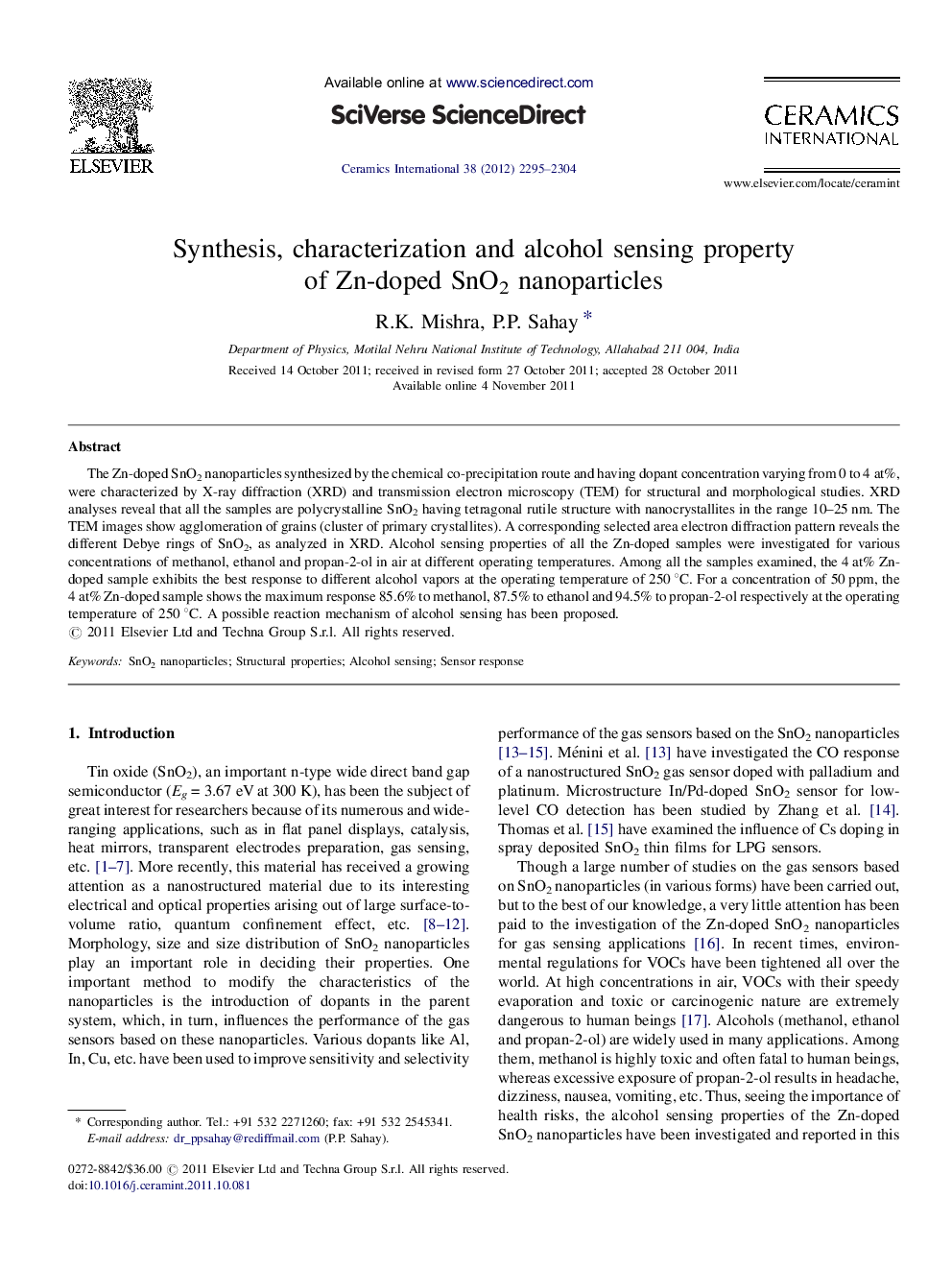| Article ID | Journal | Published Year | Pages | File Type |
|---|---|---|---|---|
| 1464245 | Ceramics International | 2012 | 10 Pages |
The Zn-doped SnO2 nanoparticles synthesized by the chemical co-precipitation route and having dopant concentration varying from 0 to 4 at%, were characterized by X-ray diffraction (XRD) and transmission electron microscopy (TEM) for structural and morphological studies. XRD analyses reveal that all the samples are polycrystalline SnO2 having tetragonal rutile structure with nanocrystallites in the range 10–25 nm. The TEM images show agglomeration of grains (cluster of primary crystallites). A corresponding selected area electron diffraction pattern reveals the different Debye rings of SnO2, as analyzed in XRD. Alcohol sensing properties of all the Zn-doped samples were investigated for various concentrations of methanol, ethanol and propan-2-ol in air at different operating temperatures. Among all the samples examined, the 4 at% Zn-doped sample exhibits the best response to different alcohol vapors at the operating temperature of 250 °C. For a concentration of 50 ppm, the 4 at% Zn-doped sample shows the maximum response 85.6% to methanol, 87.5% to ethanol and 94.5% to propan-2-ol respectively at the operating temperature of 250 °C. A possible reaction mechanism of alcohol sensing has been proposed.
